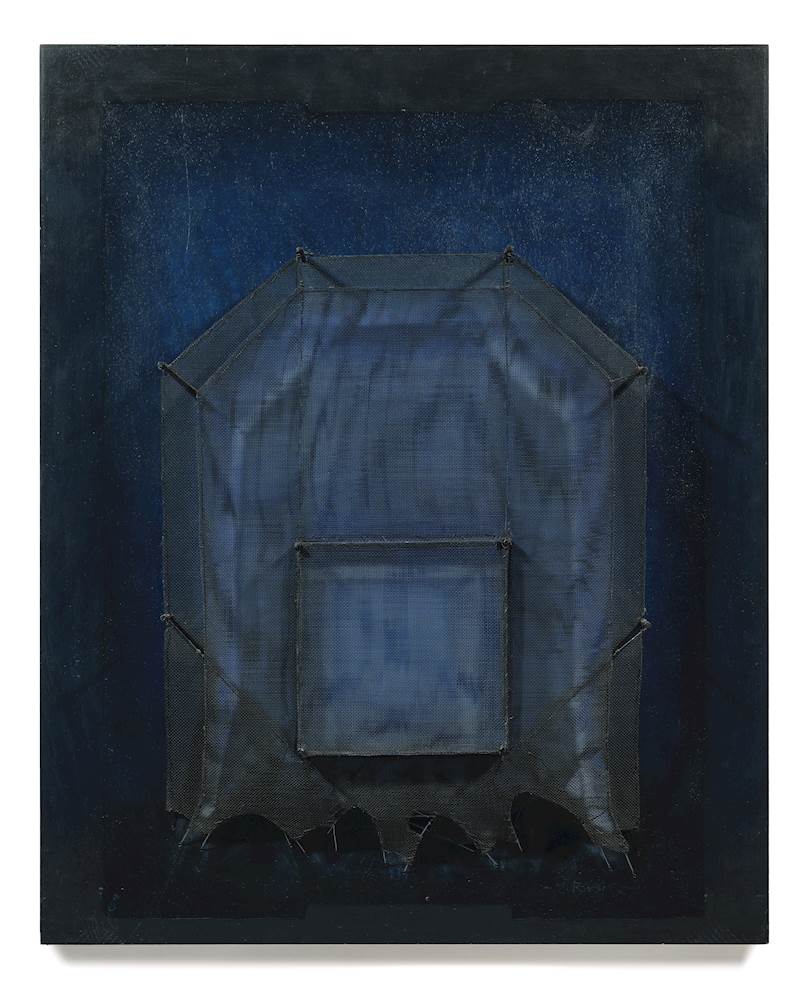
Lotto 3418 - A211 Postwar e contemporary art - giovedì, 28. novembre 2024, 16h00
MANUEL RIVERA
(Granada 1927–1995 Madrid)
Espejo para Guardar un Sueño. 1968.
Wire mesh, wire and oil on wood.
Signed lower right: M. Rivera, as well as signed twice, titled, dated and with directional arrow: Manuel Rivera - "ESPEJO PARA GUARDAR UN SUEÑO" - M. Rivera - 1968 BASE.
100 × 81 cm.
Provenance:
- Galerie Hilde Müller, Winterthur.
- Private collection, Switzerland.
- Private collection, Switzerland, received by descent.
Literature:
Manuel Rivera was a key exponent of informal art and co-founder of the avant-garde movement "El Paso", which emerged in Madrid in the mid-1950s. ‘El Paso’ advocated free, authentic and experimental art and saw itself as a means of political, ethical and social protest during the Franco regime.
One of Manuel Rivera's central objectives was to translate real spatial experiences into pictorial form. His interest in light and the effect and perception of space accompanied him from an early age. Even as a teenager, he spent many late afternoons in Granada trying to capture the subdued, intangible light of dusk on paper. Following a creative crisis and obsessed with the idea of creating spaces in all their fullness, Rivera initially experimented with a series of works on canvas and, in the process, reached a certain limit. By chance, he discovered a wire mesh in a shop window that was being used for exhibition purposes. Rivera began to experiment with it and finally found his material. He began to stretch wire mesh on frames, observing how the light penetrated through its fine weave and how the visual effect changed depending on the perspective. From then on, Rivera arranged and installed various elements in different ways. The result is a fascinating visual complexity and a unique interplay of light and space. Kinetic effects are created depending on the angle of vision and the external conditions. It is as if one is looking at a spider's web that meticulously tries to capture light instead of insects. The result is a pulsating, lively, almost threatening presence. Rivera's works are also characterised by different textures, colours and transparencies. Surrounded by a mysterious aura, we witness how the boundaries between painting and sculpture become blurred and Rivera's endeavours come to the fore in all their fullness.
One of Manuel Rivera's central objectives was to translate real spatial experiences into pictorial form. His interest in light and the effect and perception of space accompanied him from an early age. Even as a teenager, he spent many late afternoons in Granada trying to capture the subdued, intangible light of dusk on paper. Following a creative crisis and obsessed with the idea of creating spaces in all their fullness, Rivera initially experimented with a series of works on canvas and, in the process, reached a certain limit. By chance, he discovered a wire mesh in a shop window that was being used for exhibition purposes. Rivera began to experiment with it and finally found his material. He began to stretch wire mesh on frames, observing how the light penetrated through its fine weave and how the visual effect changed depending on the perspective. From then on, Rivera arranged and installed various elements in different ways. The result is a fascinating visual complexity and a unique interplay of light and space. Kinetic effects are created depending on the angle of vision and the external conditions. It is as if one is looking at a spider's web that meticulously tries to capture light instead of insects. The result is a pulsating, lively, almost threatening presence. Rivera's works are also characterised by different textures, colours and transparencies. Surrounded by a mysterious aura, we witness how the boundaries between painting and sculpture become blurred and Rivera's endeavours come to the fore in all their fullness.
CHF 20 000 / 30 000 | (€ 20 620 / 30 930)


